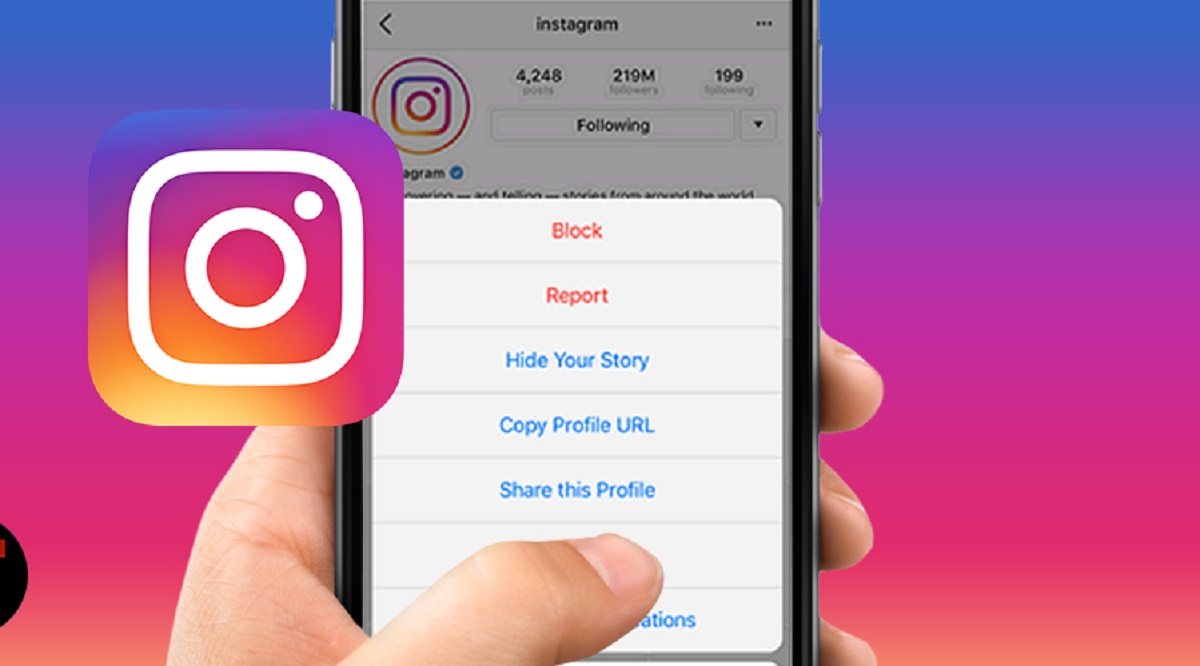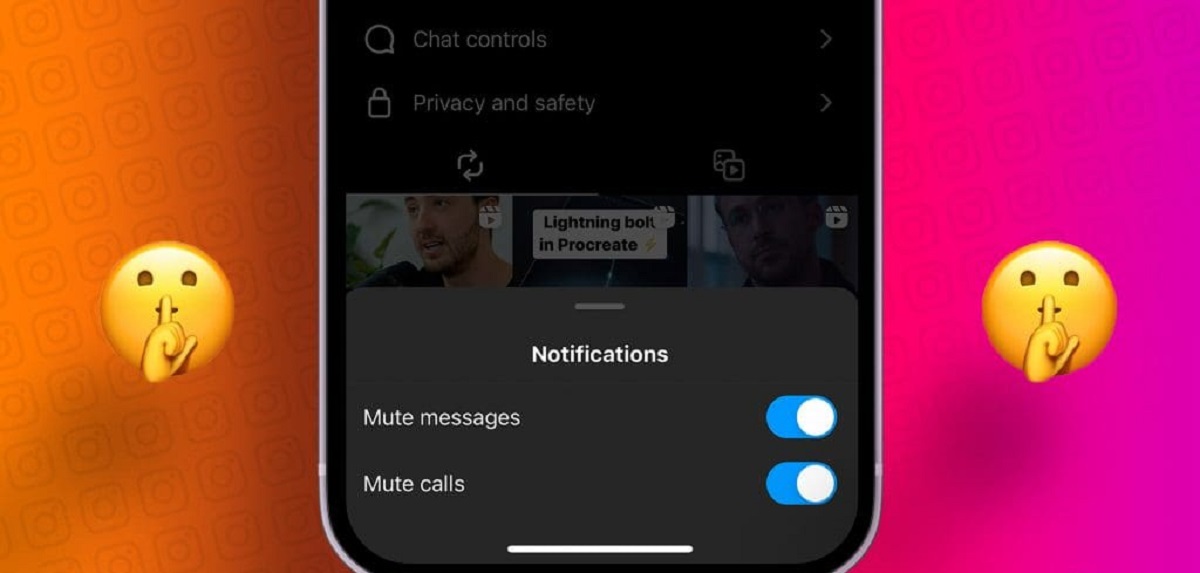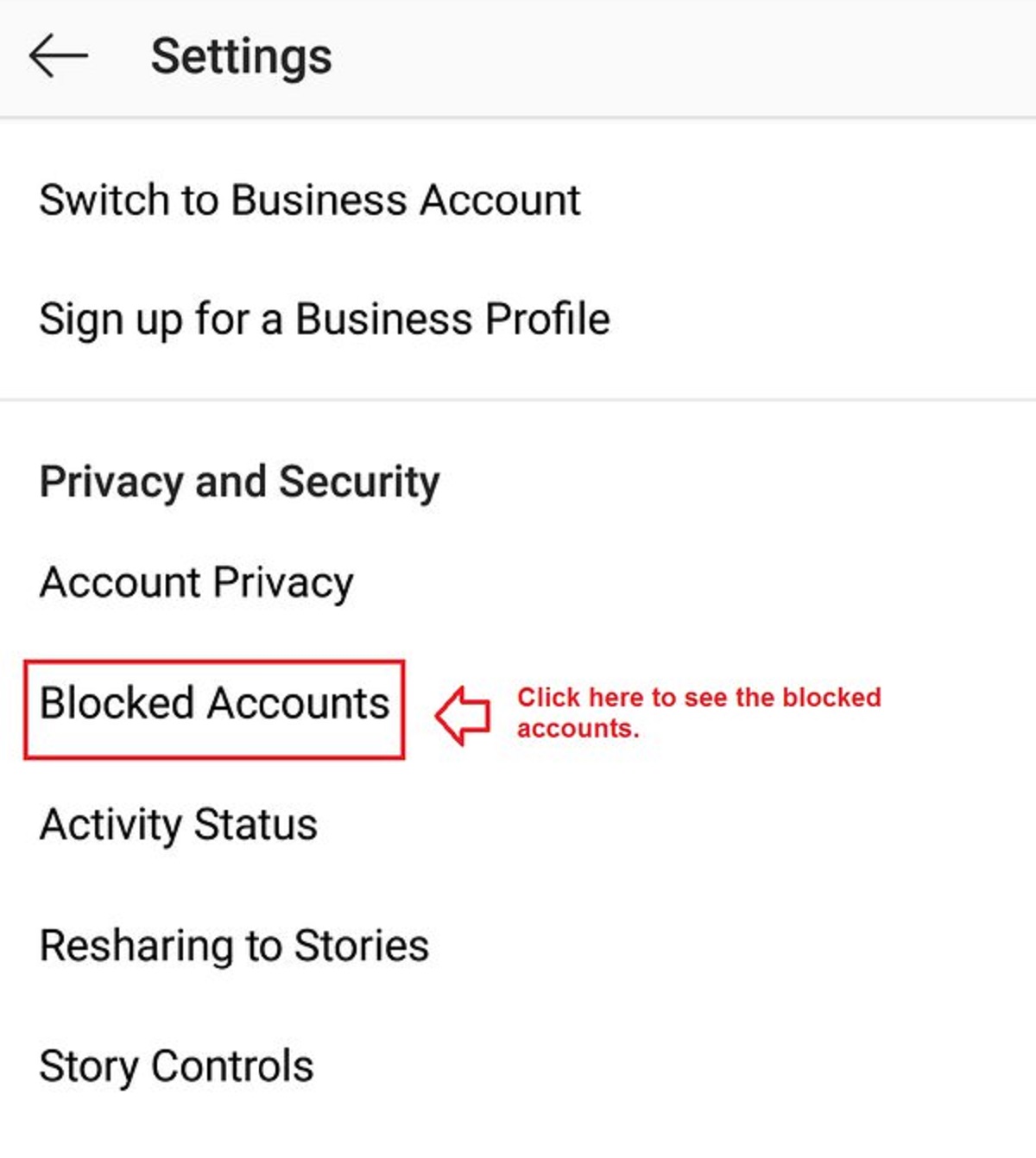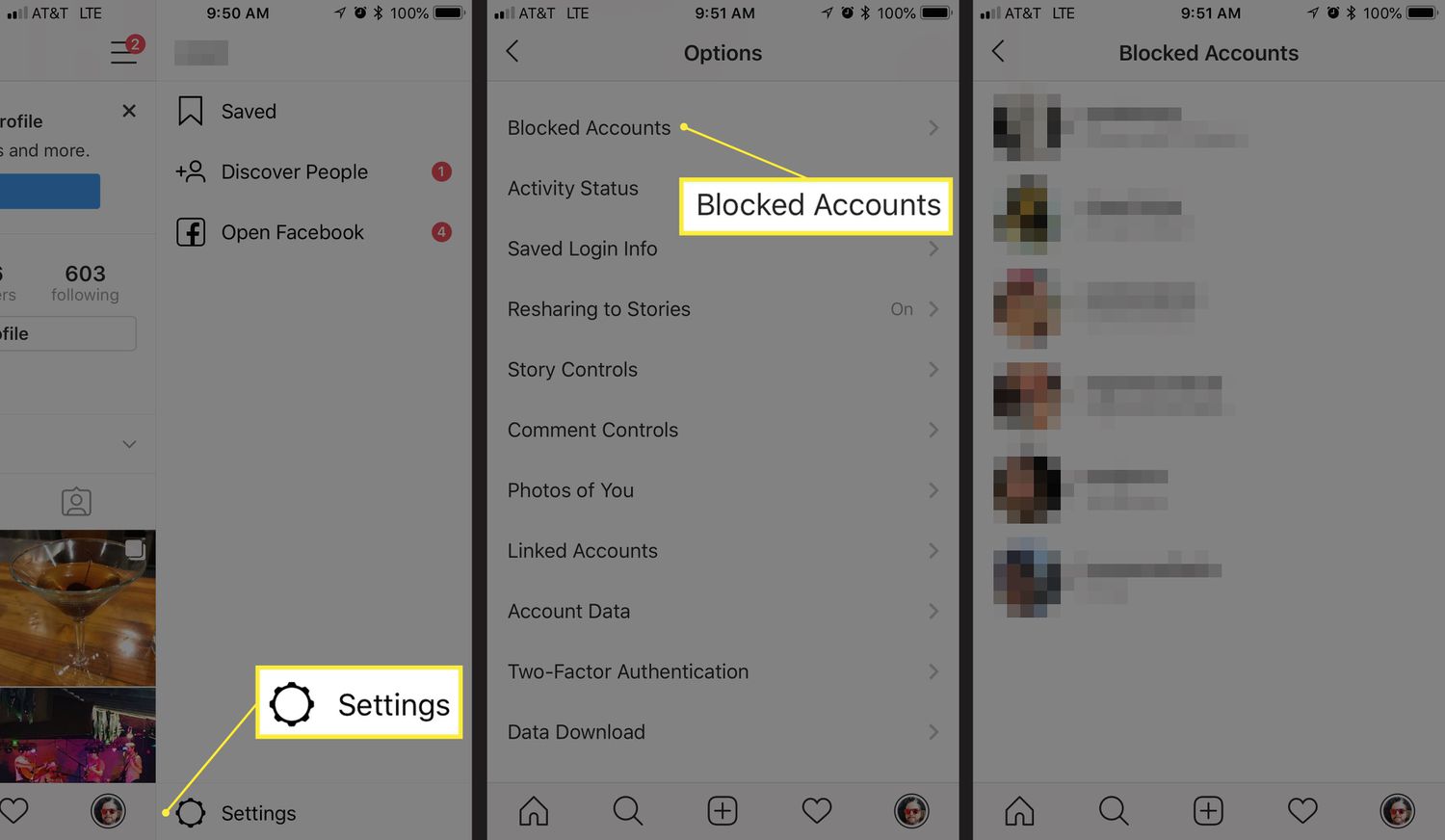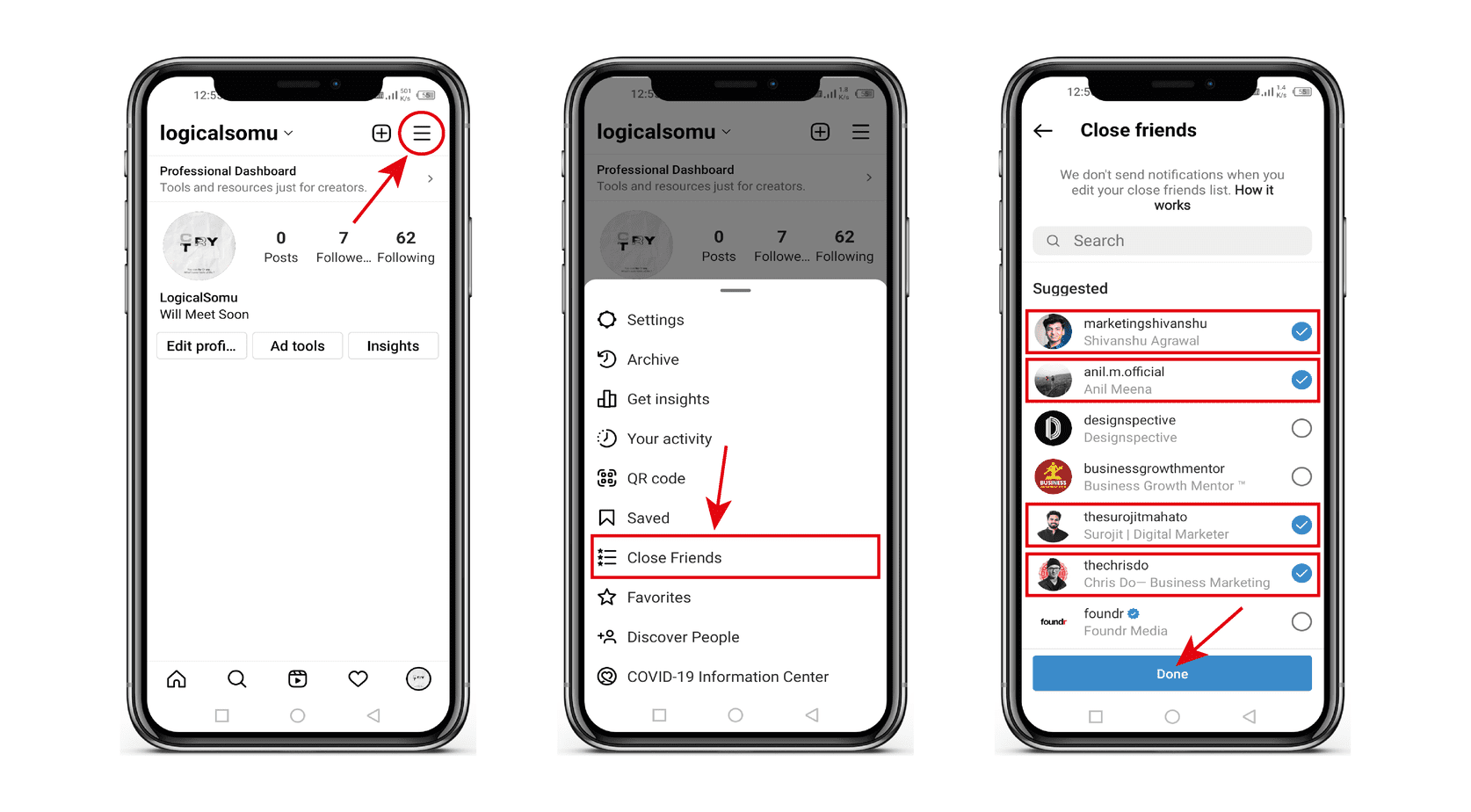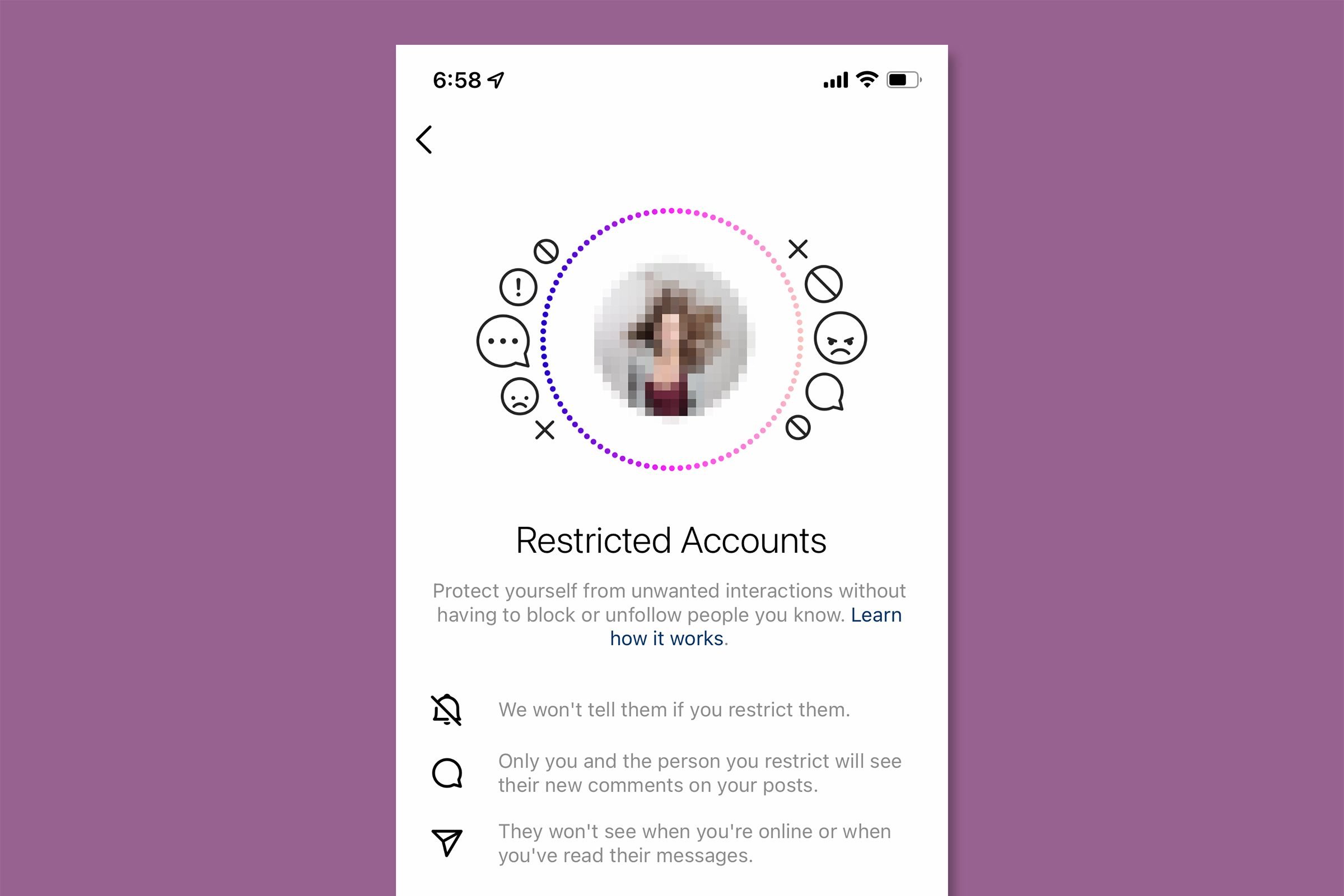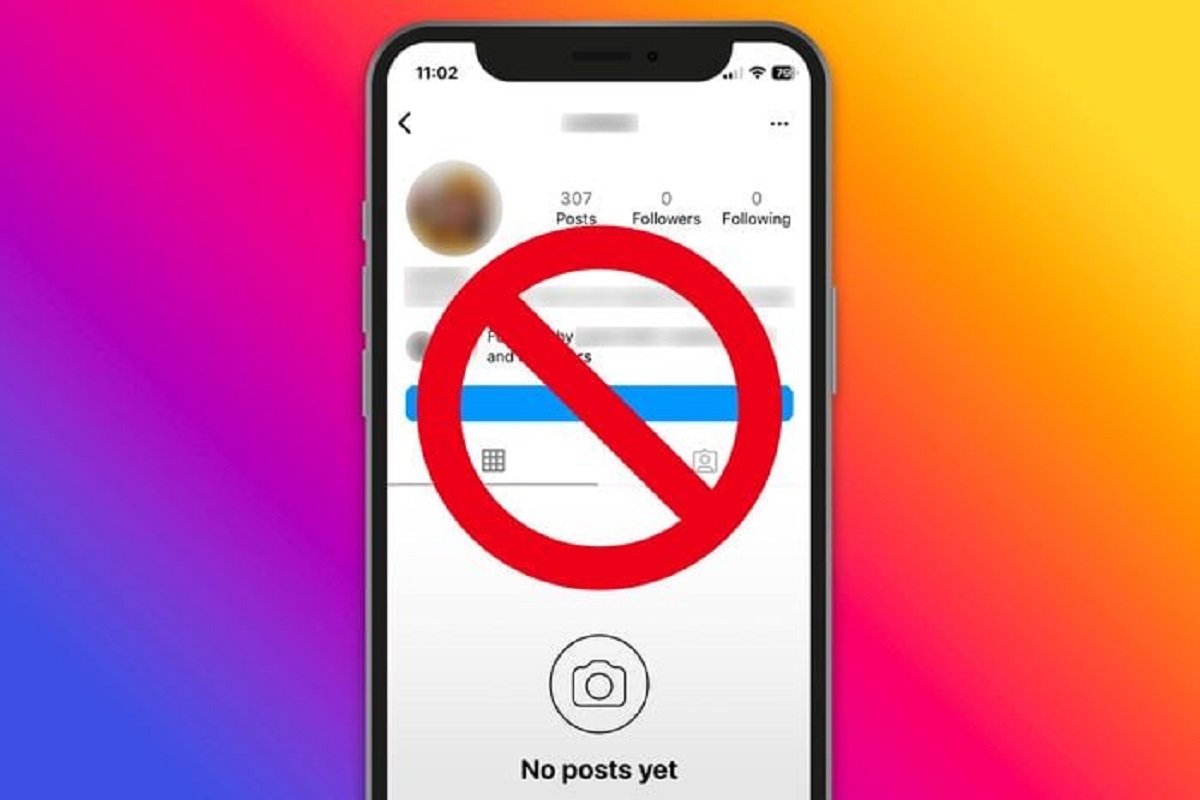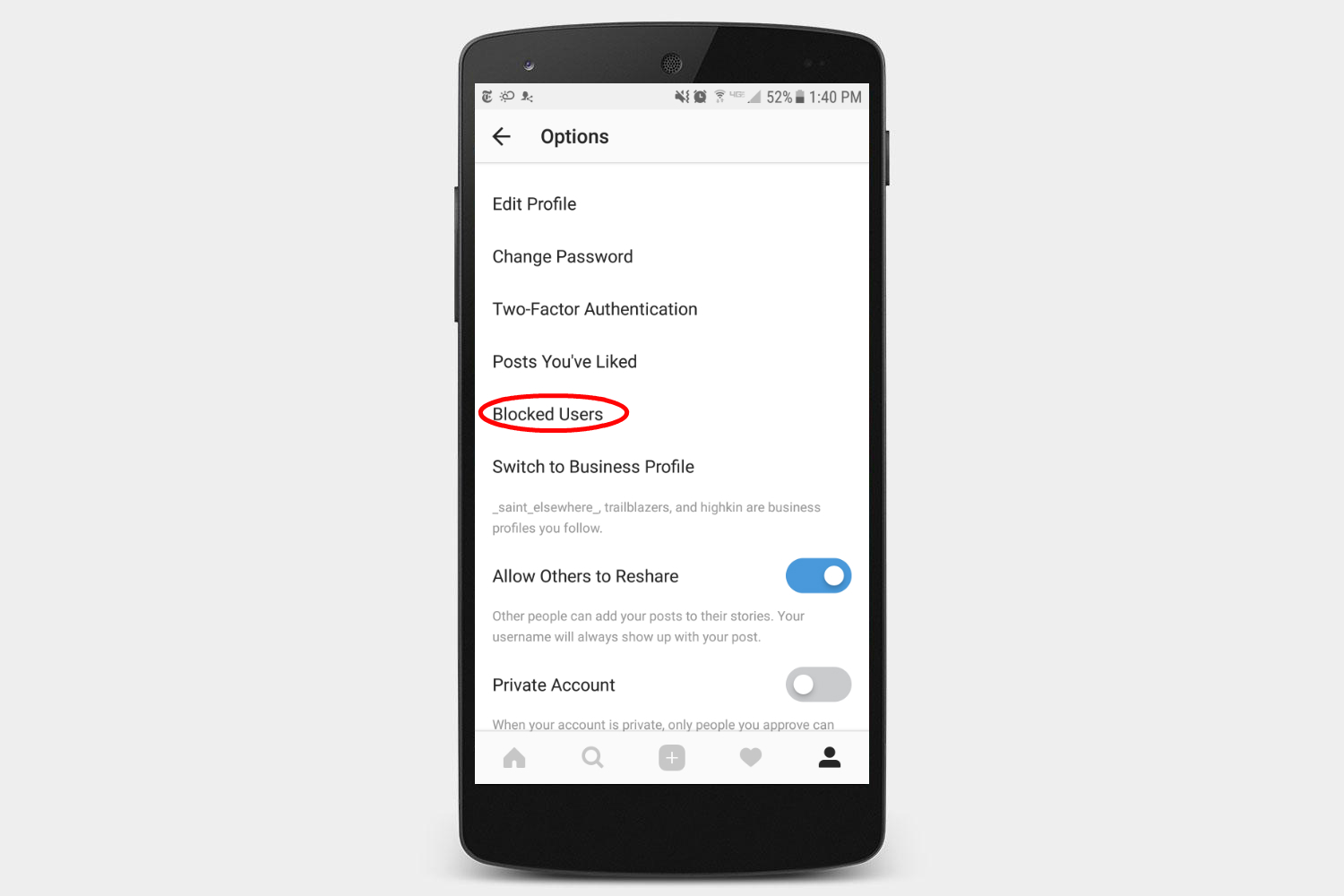Introduction
Instagram, with its massive user base of over one billion, is a popular platform for sharing moments, connecting with others, and finding inspiration. However, there may be instances where you encounter unwanted interactions or feel the need for some level of privacy. In such cases, blocking someone on Instagram can be a useful tool.
When you block someone on Instagram, you essentially restrict their access to your profile, posts, stories, and communication. It provides a sense of control and peace of mind, ensuring that your online experience remains enjoyable and free from unwanted interactions.
But what exactly happens when you hit that block button? Does the blocked person still have any visibility into your profile or activities? How does the blocking process work, and can you reverse it if needed? In this article, we will delve into these questions and explore the ins and outs of blocking on Instagram.
Whether you have encountered someone who is harassing you, sharing inappropriate content, or simply want to distance yourself from an individual, understanding the consequences and implications of blocking someone is crucial. So, let’s dive in and explore how blocking on Instagram works.
What happens when you block someone on Instagram?
When you block someone on Instagram, several actions are taken to restrict their access to your profile and prevent any further interactions. Here are the key consequences of blocking:
- Profile visibility: Once someone is blocked, they will no longer be able to see your profile when they search for your username or visit your profile directly. This means that your posts, bio, followers, and following list will be hidden from their view.
- Post and story visibility: Any posts or stories you share on Instagram will no longer be visible to the blocked person in their feed or story list. They won’t be able to engage with or comment on your posts anymore.
- Messaging restrictions: Blocking someone on Instagram also means that they will no longer be able to send you direct messages. Any existing conversations between you and the blocked person will be removed, and they won’t be able to initiate new conversations with you.
- Notification blackout: When you block someone, Instagram ensures that the blocked person doesn’t receive any notifications about your activities, whether it’s liking, commenting, or following others. This helps to create a complete disconnect between you and the blocked individual.
- Follow and unfollow restriction: If you block someone who was previously following you, they will automatically be unfollowed. Moreover, if you decide to unblock them later, they will not be automatically re-added to your followers list. They will have to follow you again to re-establish the connection.
It’s important to note that blocking someone on Instagram is a one-sided action, meaning the blocked person might not always be aware that they have been blocked. They won’t receive any direct notifications or alerts about being blocked, but they might indirectly notice the lack of access to your profile and the absence of your posts and stories in their feed.
Blocking someone on Instagram can provide a sense of control and privacy, allowing you to curate your online experience and prevent unwanted interactions. However, it’s essential to remember that blocking should be used responsibly and only in situations where it is genuinely necessary.
How to block someone on Instagram
If you find yourself in a situation where you need to block someone on Instagram, the process is relatively straightforward. Here’s a step-by-step guide on how to block someone on Instagram:
- Open the Instagram app: Launch the Instagram app on your mobile device. Ensure that you are logged into your account.
- Find the person’s account: Navigate to the profile of the person you want to block. You can do this by searching for their username in the search bar or finding them through your followers or following list.
- Access the profile options: Once you are on the person’s profile, locate the three vertical dots (Android) or three horizontal dots (iOS) in the top-right corner of the screen. This will open the profile options menu.
- Select the “Block” option: In the profile options menu, scroll down until you find the “Block” option. Tap on it to initiate the blocking process.
- Confirm the blocking: A dialog box will appear asking you to confirm the block. It will inform you about the consequences of blocking, such as the person not being able to see your profile and any future interactions being prevented. Read the message carefully and if you still wish to proceed, select “Block” or “Yes” to confirm the action.
After following these steps, the person you have blocked will no longer have access to your profile, posts, stories, or the ability to message you on Instagram. It’s important to note that blocking is irreversible, so make sure you are certain about your decision before proceeding.
Keep in mind that blocking someone on Instagram is a personal choice and should be used responsibly. It is recommended to block someone only when you feel genuinely uncomfortable or when the person’s actions violate Instagram’s community guidelines.
Now that you know how to block someone on Instagram, you can take control of your online interactions and create a safer and more peaceful virtual environment.
Can a blocked person still see your profile?
Blocking someone on Instagram ensures that the blocked person’s access to your profile is restricted. Here’s what happens in terms of profile visibility when you block someone:
Once you have blocked someone, they will no longer be able to see your profile when they search for your username or visit your profile directly. Your posts, bio, followers, and following list will be hidden from their view.
This means that the blocked person will not be able to view your profile, follow you, or interact with your posts in any way. It’s as if your profile has become invisible to them within the Instagram platform.
However, it’s important to note that blocking someone does not remove your profile entirely from Instagram. It simply restricts their visibility and access to your content.
It’s worth mentioning that existing conversations between you and the blocked person will be deleted. So, if you had any direct message conversations with them, those conversations will no longer be accessible to either party after the blocking process.
It’s also important to remember that blocking is a one-sided action, meaning the blocked person might not always be aware that they have been blocked. They won’t receive any direct notifications or alerts indicating that you have blocked them. However, they might indirectly notice that they no longer have access to your profile, posts, and stories.
Overall, blocking someone on Instagram ensures that your profile remains hidden and inaccessible to the blocked person, giving you a sense of control and privacy over your online presence.
Can a blocked person still see your posts and stories?
Blocking someone on Instagram not only restricts their access to your profile but also prevents them from seeing your posts and stories. Here’s what happens when you block someone in terms of post and story visibility:
Once someone is blocked, any posts or stories you share on Instagram will no longer be visible to them in their feed or story list. This means that they won’t be able to see the content you post or engage with it in any way.
The blocked person will not have the ability to like, comment, or share your posts, and they will not be notified about any new content you publish. Your posts and stories effectively become invisible to them.
It’s important to understand that blocking someone on Instagram does not retroactively remove your previous posts or stories from their feed. However, any new posts or stories you share after blocking them will not be visible to them.
It’s worth noting that blocking someone only restricts their visibility of your posts and stories. They might still be able to see your posts and stories through other means, such as if someone else who is not blocked shares your content or if your account is public and accessible to non-followers.
However, it’s important to remember that blocking someone on Instagram is an effective way to limit their access to your posts and stories, ensuring that they no longer have direct visibility or the ability to engage with your content.
By blocking someone, you have the power to control who can see and interact with your posts and stories, creating a more personalized and enjoyable online experience.
Can a blocked person still message you?
Blocking someone on Instagram not only prevents them from accessing your profile and seeing your posts, but it also restricts their ability to message you. Here’s what happens when you block someone in terms of messaging:
Once you have blocked someone, they will no longer be able to send you direct messages on Instagram. Any existing conversations between you and the blocked person will be removed from your inbox, and they won’t have the ability to initiate new conversations with you.
Blocking ensures a complete communication blackout between you and the blocked person, making it impossible for them to reach out to you directly through the Instagram messaging system.
It’s important to note that while you have the ability to block someone, Instagram does not notify the blocked person directly that they have been blocked. They might realize that they can no longer message you if they attempt to do so or if they notice the lack of response from your end.
However, it’s important to remember that blocking someone on Instagram does not extend to other messaging platforms or methods of communication. They might still be able to contact you through other means outside of Instagram, such as via email or other social media platforms.
If you ever decide to unblock someone on Instagram, it’s important to note that the previous conversations you had with them will not be restored. Blocking effectively removes all traces of their messages from your inbox, and unblocking them will not bring back those conversations.
By blocking someone on Instagram, you assert control over your direct messages and ensure that unwanted individuals cannot initiate or continue conversations with you on the platform.
How to unblock someone on Instagram
If you have previously blocked someone on Instagram and now wish to unblock them, the process is simple. Here’s a step-by-step guide on how to unblock someone on Instagram:
- Open the Instagram app: Launch the Instagram app on your mobile device and make sure you are logged into your account.
- Access your settings: Tap on the profile icon located at the bottom right corner of the screen to open your profile. From there, tap on the three horizontal lines (Android) or three vertical dots (iOS) in the top-right corner to access the options menu.
- Navigate to the blocked accounts: In the options menu, scroll down until you find the “Settings” option. Tap on it to open the settings menu, then select “Privacy” and then “Blocked Accounts.”
- Find the person you want to unblock: In the list of blocked accounts, locate the username of the person you want to unblock. You can scroll through the list or use the search bar at the top to find them more quickly.
- Unblock the person: Once you have found the person you want to unblock, tap on their username to open their profile. From there, tap on the “Unblock” button, which is usually located next to the “Follow” button.
- Confirm the unblocking: A dialog box will appear asking you to confirm the unblock. It’s important to note that unblocking someone means they will have access to your profile, posts, and the ability to message you. If you are sure about unblocking them, select “Unblock” or “Yes” to confirm.
After following these steps, the person you have unblocked will be able to see your profile, posts, and stories. They will also have the ability to message you if they choose to do so.
It’s important to think carefully before unblocking someone, as doing so effectively reverses the restrictions you originally placed on their access to your content and communication. Make sure to assess the situation and ensure that unblocking is the right decision for you.
By knowing how to unblock someone on Instagram, you can easily manage your blocked list and make adjustments to your connections as needed.
Should you block someone on Instagram?
Deciding whether or not to block someone on Instagram is a personal choice that depends on your individual circumstances and the nature of your relationship with the person in question. Here are some factors to consider when deciding whether to block someone on Instagram:
Harassment or abuse: If you are experiencing harassment, bullying, or any form of abuse from someone on Instagram, blocking them can provide a necessary boundary and protect your mental well-being. Blocking can help prevent further unwanted interactions and create a safer online environment for you.
Inappropriate content: If someone consistently posts inappropriate or offensive content that makes you uncomfortable, blocking them can shield you from their content and maintain a more positive social media experience. It allows you to curate your feed and avoid exposure to content that goes against your values.
Unwanted attention: If someone is constantly liking, commenting, or messaging you in a persistent and unwanted manner, blocking can help establish boundaries and reduce their ability to intrude on your digital space. Blocking can provide relief from unwanted attention and preserve your privacy.
Conflicts or toxic relationships: If you are dealing with a toxic relationship or experiencing conflicts with someone on Instagram, blocking can create distance and give you time and space to heal and recover. It allows you to prioritize your emotional well-being and avoid further entanglements.
Personal preference: Ultimately, the decision to block someone on Instagram is completely subjective and based on your own comfort and preferences. If you simply don’t want someone to have access to your profile, posts, or messages for any reason, blocking can provide a sense of control over your online interactions.
However, it’s important to exercise mindfulness when blocking someone and consider the potential consequences. Blocking should not be seen as a tool for retaliation or aggression, but rather as a means of protecting yourself and maintaining a positive online experience.
Remember that blocking someone is a one-sided action, meaning the blocked person might not always be aware that they have been blocked. As such, if your intention is to send a clear message or address a particular issue, it may be more effective to communicate directly or seek assistance from Instagram’s moderation tools.
Ultimately, the decision to block someone on Instagram should be made with your well-being and comfort in mind. Reflect on your specific circumstances and make a decision that aligns with your personal boundaries and online experiences.
Conclusion
Blocking someone on Instagram can be a valuable tool to protect your privacy, maintain a positive online experience, and distance yourself from unwanted interactions. When you block someone, they lose access to your profile, posts, stories, and ability to message you. It allows you to establish boundaries, safeguard your mental well-being, and take control of your online interactions.
By understanding the consequences of blocking, you can make informed decisions about who to block and when to do so. Consider factors such as harassment, abuse, inappropriate content, unwanted attention, conflicts, and personal preference when determining whether to block someone on Instagram.
Remember that blocking should be used responsibly and not as a means of retaliation or aggression. It’s essential to approach blocking with the intention of protecting yourself and maintaining a positive online environment.
If you do decide to block someone, it’s important to be mindful of the potential impact on your digital interactions. Consider alternative methods of communication or seek assistance from Instagram’s moderation tools if you need to address specific issues or send a clear message.
On the other hand, if you have previously blocked someone and have found resolution or feel comfortable re-establishing the connection, you can easily unblock them following a few simple steps.
In the end, the decision to block or unblock someone on Instagram is entirely up to you. Reflect on your own circumstances, prioritize your well-being, and choose the path that allows you to have a positive and enjoyable experience on the platform.
Remember, Instagram is meant to be a space where you can freely express yourself, connect with others, and find inspiration; blocking can help ensure that it remains that way.







